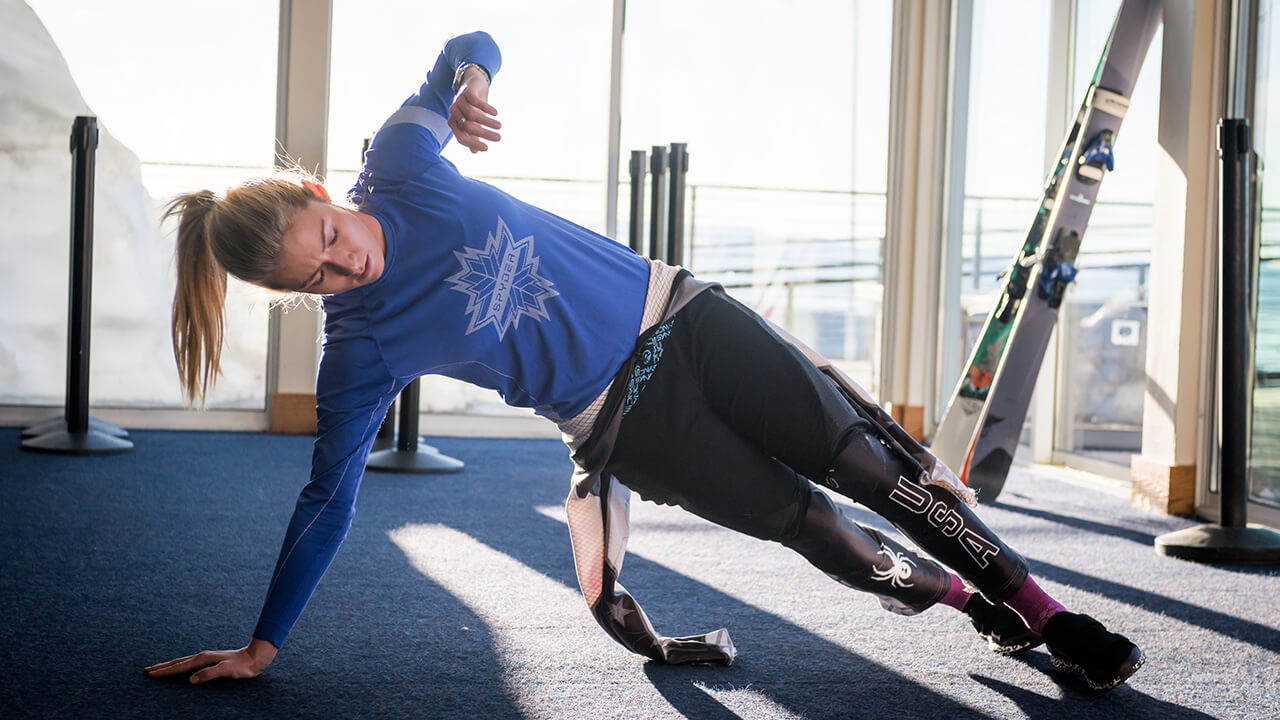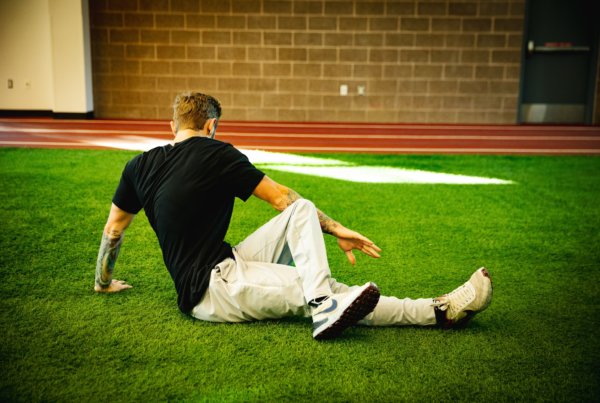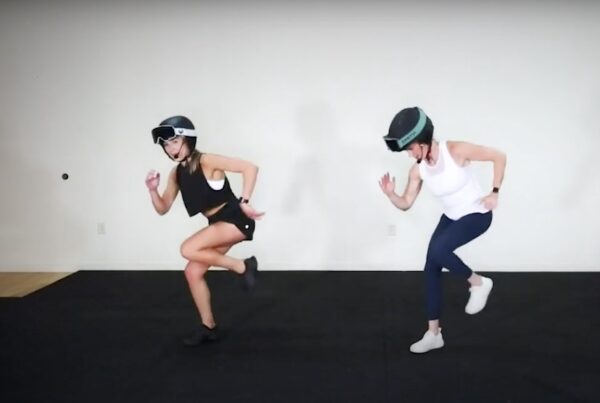As fall’s cooler temps move in, the time is now to get ready—both mentally and physically—for the slopes. Try these suggested training activities 2-3 times a week to get your muscles in shape and help prevent injury this upcoming season – because you don’t want to miss a stellar powder day.
STRENGTH TRAINING
Squat/Goblet Squat
Description: Squats are a great way to strengthen legs, glutes and core. This exercise is perfect for novice skiers and riders, as it helps prepare muscles for the mountain, as well as loading onto the chairlift.
How to do it:
- Stand with feet slightly wider than hip-width apart.
- Hold hands at chest with elbows pointing down.
- Push hips back, keeping your chest up and bend your knees to 90 degrees or lower.
- Engage your glutes and lower core at the bottom and hold for 3 seconds.
- Push back up to stand.
Reps: Perform 20 squats three times.
Variations: If you want to challenge yourself, add weight using dumbbells or kettlebells. If you’re performing this move outside, grab a heavy rock and start squatting.
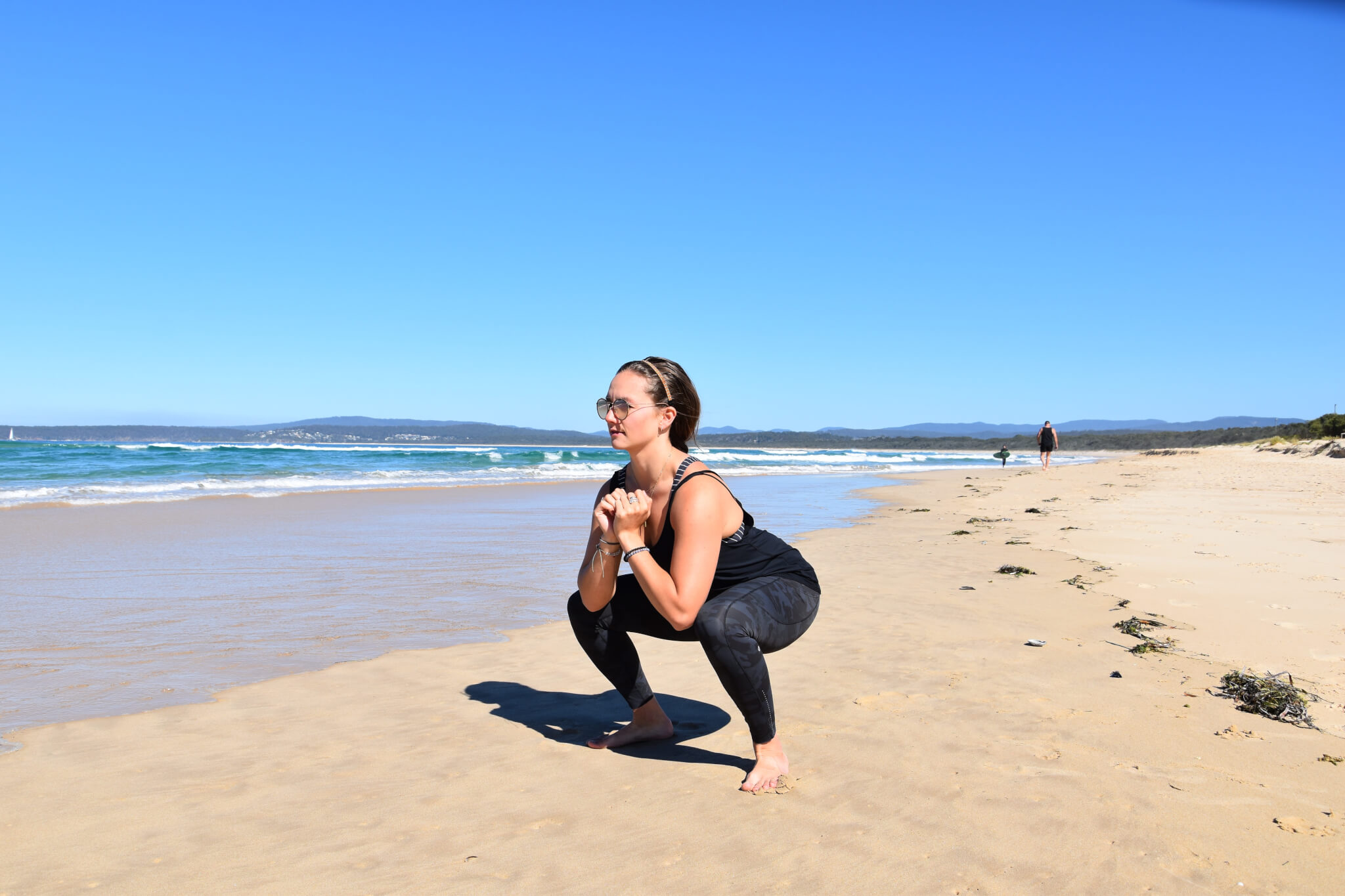
Lateral Box Jumps
Description: One of the most well-known plyometric exercises, box jumps help build muscle to boost strength and explosiveness. This variation on the traditional box jump helps with quickness, engaging those specific muscles skiers need to maneuver down the mountain. This agility exercise takes the same body weight you need to push down the hill and forces you to support it and develop those muscles on dry land.
How to do it:
- Based on your height, use a box that is almost as tall as your knees.
- Position yourself to the right of the box, feet hip-width apart.
- Bend your knees and jump to the side with both feet to land quietly on the box, making sure to decelerate your muscles and control your body.
- Then jump off onto the other side, again landing softly on the ground.
- Continue jumping back and forth onto the box, keeping movements quiet and quick.
Reps: Perform three sets of three intervals of 30 seconds, 60 seconds, and 90 seconds. See how many jumps you can do in each timeframe. When you move to the second set of intervals, try to beat the amount of reps from the first set.
Variations: You know your fitness level best. If you want to start slow, begin with stepping up and down for the allotted amount of time, progressing towards jumping. You can also grab a shorter box and begin with 15 and 30 second intervals, working up to a taller box and longer intervals. For a challenge, opt for a taller box.
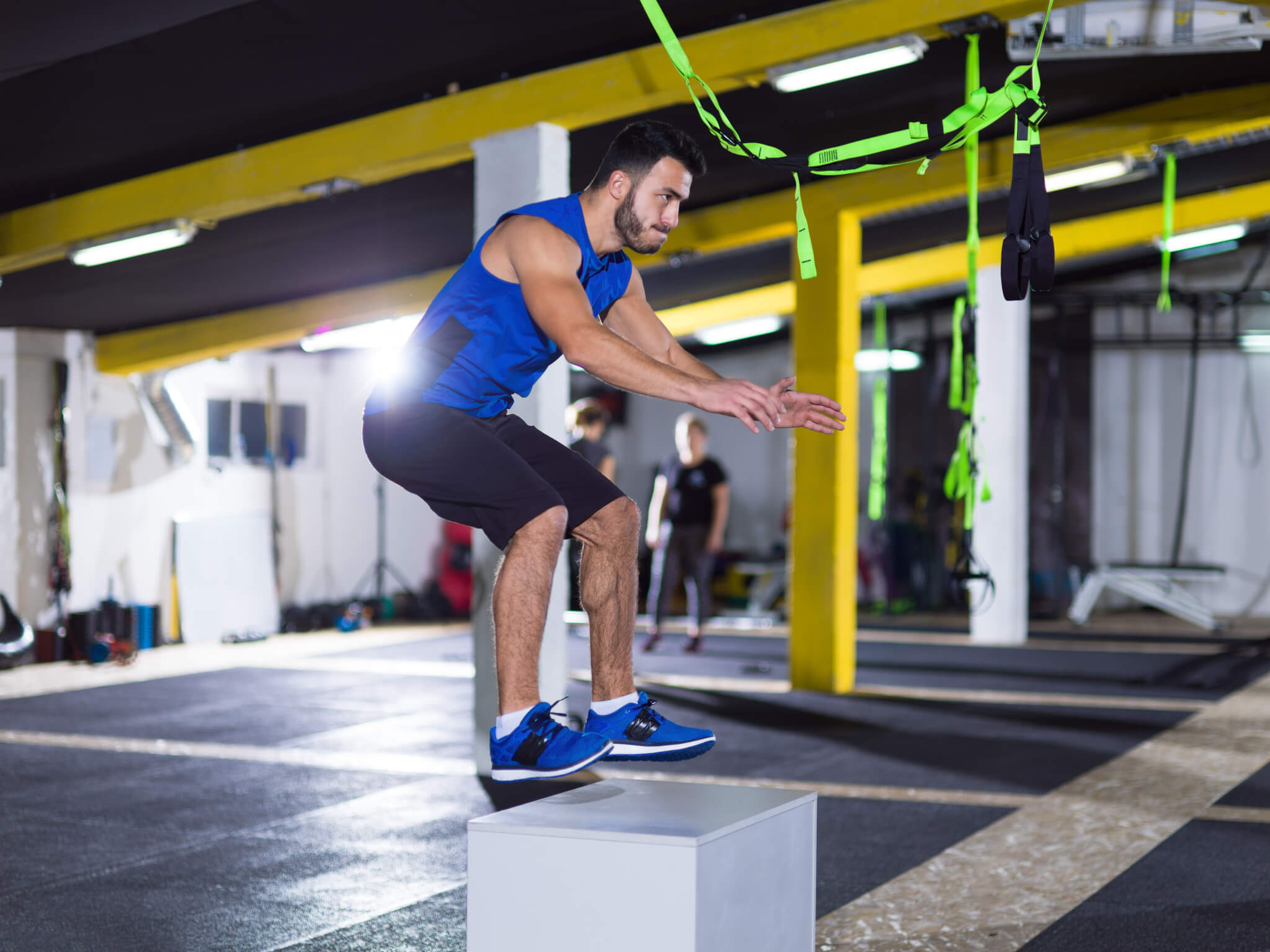
Geared up for the season? Check out what's new on the Ikon Pass
Glute Bridge
Description: Gluteal muscles are super important for hip flexibility and movement, as well as lower body strength. This exercise is the perfect way to isolate and activate glutes—along with hamstrings—preventing them from weakness incurred from a lifestyle of sitting. Strong glutes and hamstrings are essential for skiing performance, as well as protecting your knees and back from injury.
How to do it:
- Lay face up, knees bent so that feet are flat on the ground at hip-width apart.
- Engage your glutes and back of legs as you push your feet firmly into the ground.
- Lift your hips toward the ceiling—or sky if you’re outside.
- Hold for a couple seconds before lowering hips back down.
Reps: Perform 10 glute bridges three times.
Variation: Make the move a little more difficult by increasing the hold time or placing light dumbbells on your waist. Or you can isolate muscles even more by lifting one foot off the ground and lifting and lowering your hips with a single leg.
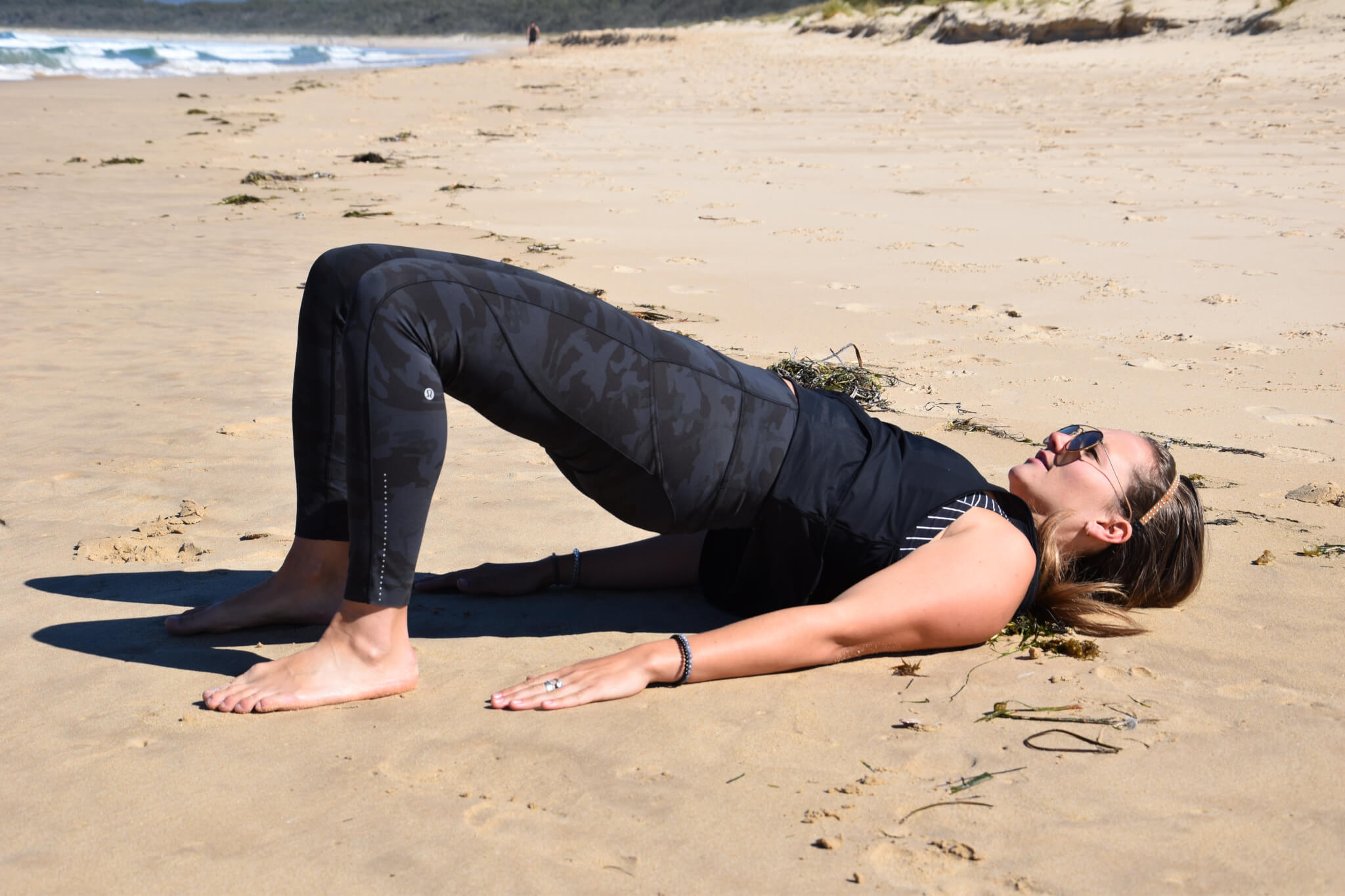
Ice Skaters
Description: Ice skaters are a great way to build single leg strength and help with quick directional changes. The explosive element to this move trains and stretches your muscles to give them the ability to make quick and athletic recoveries while on the mountain. In addition, it prepares your body to use one leg at a time in a safe manner, as skiing has transformed over the years from a two-footed sport to one that relies on individualized leg movements.
How to do it:
- Stand with feet hip-width apart in a small squat.
- Leap sideways to the right, landing on your right foot. Bring your left foot behind your right ankle, without letting it touch the ground.
- Then jump to the left, landing on your left leg, and bringing your right leg behind the left ankle.
- That’s one rep.
Reps: Complete three sets of 10 reps.
Variations: If you’re just starting to build up your leg strength, try a slightly easier version of the exercise. When you land, put both feet on the ground before jumping again to give your leg a break. For something more advanced, trying to move forward and backward as you jump. Adding in a diagonal leap can increase your agility on the mountain.
Deadlifts
Description: This strength exercise works your glutes and hamstrings. Deadlifts get your muscles in the habit of pulling your body into a safe position, stabilizing your back and ACL to help avoid injury to both these muscles.
How to do it:
- Load a barbell with your desired weight—whatever you feel most comfortable with.
- Stand with feet hip-width apart holding the barbell in front of you with your palms facing toward you.
- Hinge your hips back, as if you’re about to sit in a chair, keeping your knees over your toes. Legs should remain straight with a slight bend in the knees as you lower the bar.
- Then push through your heels and keep the weight in your hips back to bring the barbell up quickly.
- Be sure to keep your back long and straight and your core tight.
- That’s one rep.
Reps: Complete 10 reps three times, taking a 10-second break between reps.
Variation: Do this move without the weighted barbell or use lightweight dumbbells.
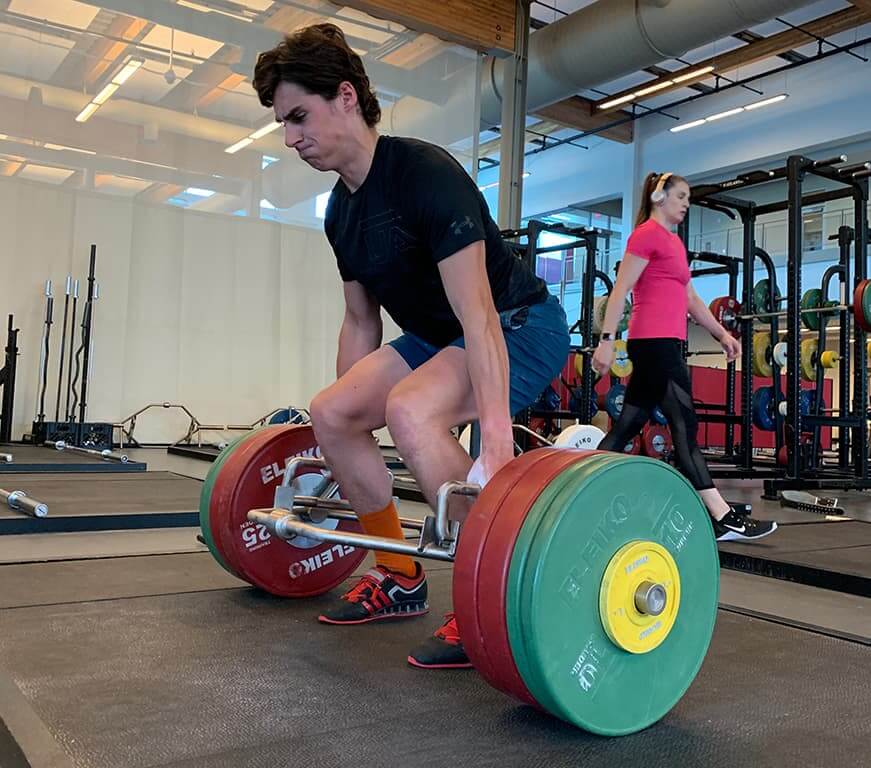
Wall Sits
Description: A simple, yet powerful exercise, the wall sit is an isometric move that requires no extra equipment. All you need is a wall to give your entire lower body a workout. The goal is to boost muscle endurance in your legs and core, which you’ll need as you carve through deep powder and steep bumps.
How to do it:
- Start in a standing position and lean against a wall (or any vertical surface you happen to be near).
- Keep feet shoulder-width apart and walk them away from the wall.
- Walk your feet out until both your hips and your knees are at a 90-degree angle, your back still firmly against the wall.
- Keep hands next to you on the wall or crossed in front of you. Do not place them on your thighs.
- Hold the position for a set period of time before pushing your body back up to standing.
Reps: Hold the wall sit for 45 seconds and then 60 seconds, taking a minute break in between. Then repeat the two set times.
Variations: If you’re new to this exercise, start with shorter hold times of 15 to 20 seconds and work up to 45 and 60. For more of a challenge, set a dumbbell or weight plate across your thighs, which will help endurance and strength.
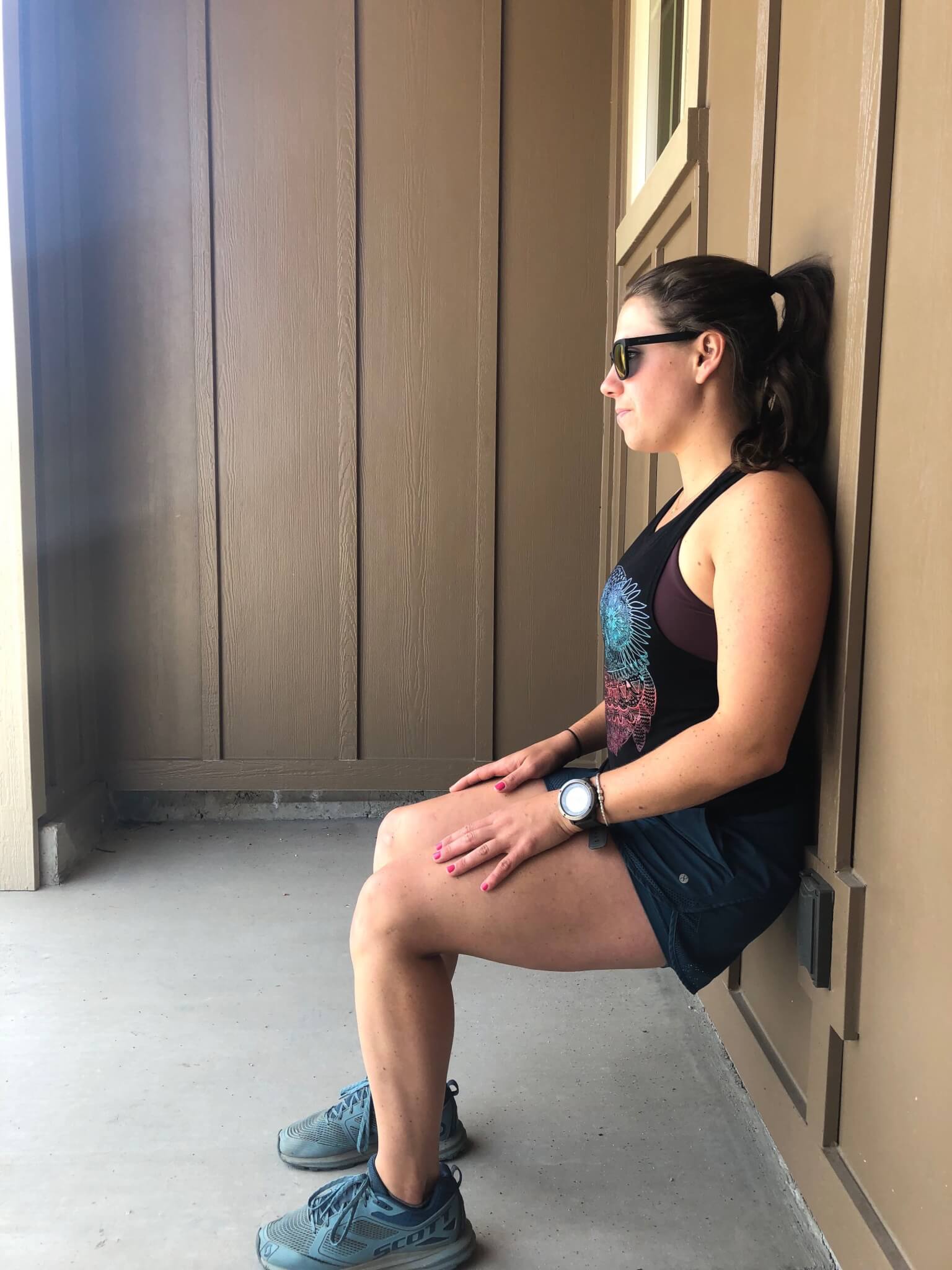
OUTDOOR FULL BODY WORKOUT
Hill Agilities
Description: While gym exercises are efficient ways to prepare for the winter season, you can also use the natural landscape to get ready. So why not head to the hills where you’ll soon be shredding powder? Doing training activities up and down hills is a full workout, helping different muscle groups engage and disengage quickly. In addition, these moves will help build quad strength, which helps both skiers and snowboarders on the mountain.
How to do it: (As mentioned, these training activities provide a full workout, so be sure to incorporate some rest and stretching between moves.)
Lunges:
- Start at the bottom of the hill and extend your right leg in front of you up the hill. Keep your knee at a 90-degree angle, without jutting the knee over your toe. Lower your left knee so it hovers just above the ground.
- Then extend your left leg in front, lowering the right knee.
- Perform lunges to the top of the hill, turn around, and lunge back down the hill.
Backward Lunges:
- At the bottom, start with your back to the hill. Extend your right leg behind you, lowering your knee until it hovers just above the ground, and bend your left knee in a 90-degree angle.
- Then move your left leg behind you, lowering the knee and bending the right leg to 90-degrees.
- Continue these backward lunges to the top of the hill, turn around and go back down.
Lunge Jumps:
- Starting at the bottom of the hill, jump into a lunge position rather than stepping. Hold that position for 2 seconds, then jump again to switch legs, holding again for 2 seconds.
- Work your way up the hill, jumping into lunges until you reach the top.
- Walk back down the hill to recover.
Tuck Jumps:
- At the bottom of the hill, start with your feet shoulder width apart.
- Drop your butt and then drive your arms up to push off the ground.
- Lift your knees towards your chest as you propel forward.
- Bend your knees as you land to absorb the impact.
- Make your way up the hill this way until you reach the top.
- Walk down the hill to recover.
Wind Sprints:
- Place markers in a line up the hill, equal distance from each other.
- Starting at the bottom, sprint to the first marker, touch the ground, and then run back to the bottom.
- On the second leg, sprint past the first marker to the second marker, touch the ground and run back to the bottom.
- Continue this sequence, hitting each marker once and then ending with a final sprint to the top and a run back down.
Reps: Do each exercise one time for a full circuit.
Variations: If you’re not ready to tackle the hill, do these training activities on flat ground. They still provide useful muscle work that can be applied on the slopes.
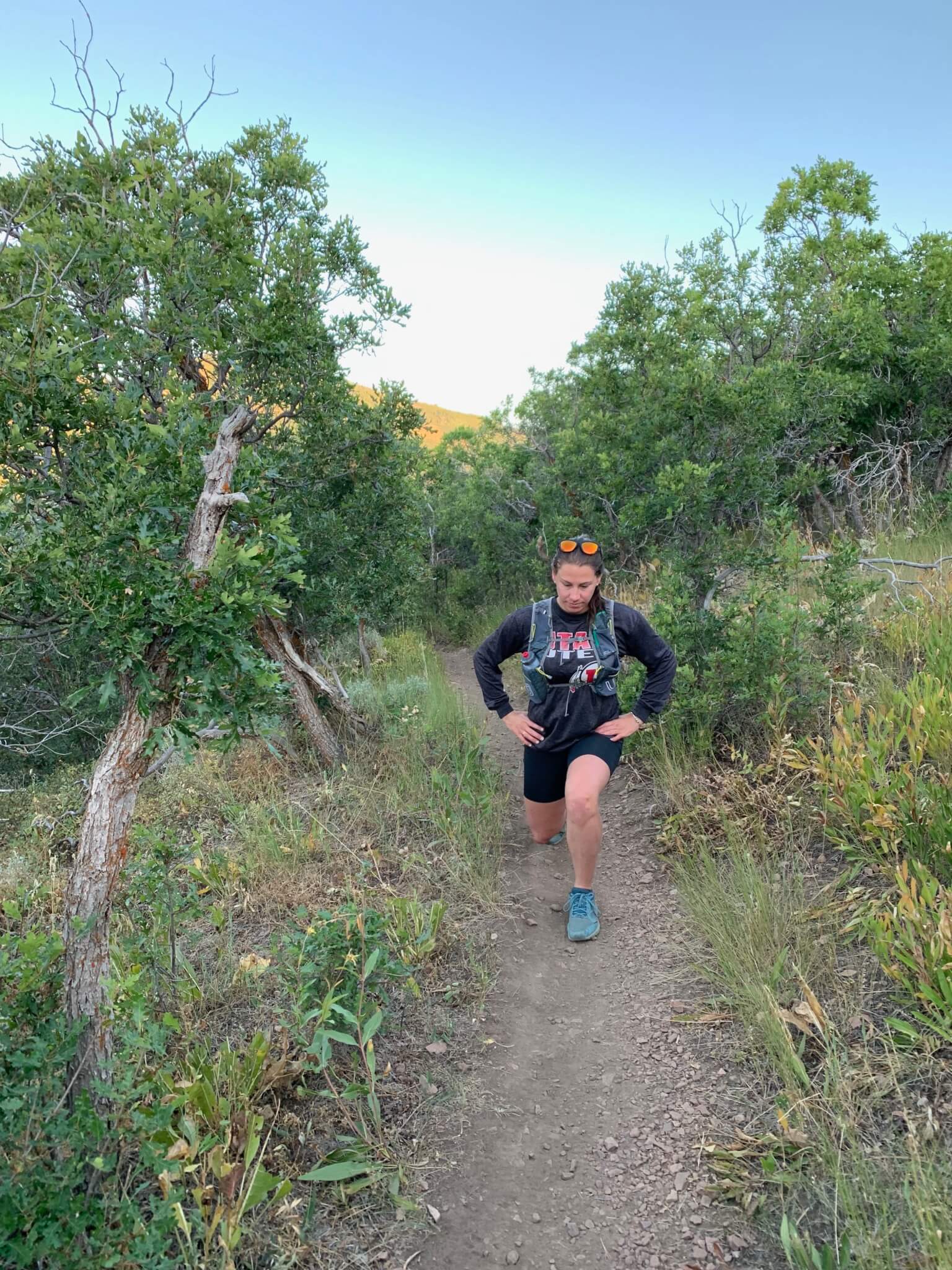
CROSS TRAINING
Soccer
Description: Cross-training is important to build general agility, and soccer is a game that excels for skiing and riding because of the consistent engagement and erratic muscle movements of the quads and glutes. Plus, it’s a fun way to get exercise.
How to do it:
- Find a field or open space.
- Grab a group of friends and a soccer ball.
- Start playing.
Reps: As many games as you want.
Variation: If you’re not a soccer fan, ultimate frisbee provides similar muscle benefits.
Trail Running
Description: As the name suggests, this cross-training activity will have you running on trails. Not the nicely paved ones in your neighborhood, but hiking trails. Trail running requires you to pay attention to obstacles on the trail, such as rocks and roots. The maneuvering helps strengthen ankles, build leg muscles and improve reflexes.
How to do it:
- Find a hiking trail.
- Lace up your running shoes.
- Run.
Reps: Run the trail as many times as you want or until you get tired.
Variations: Trail running can be difficult. If you want to start slow, try run-walk intervals to ease into running. For those comfortable with running, but not on rough trails, pick a flat, well maintained dirt path with very few obstacles, and work your way up to more technical ones. If you’re familiar with trail running, find some steeper inclines to challenge your endurance.
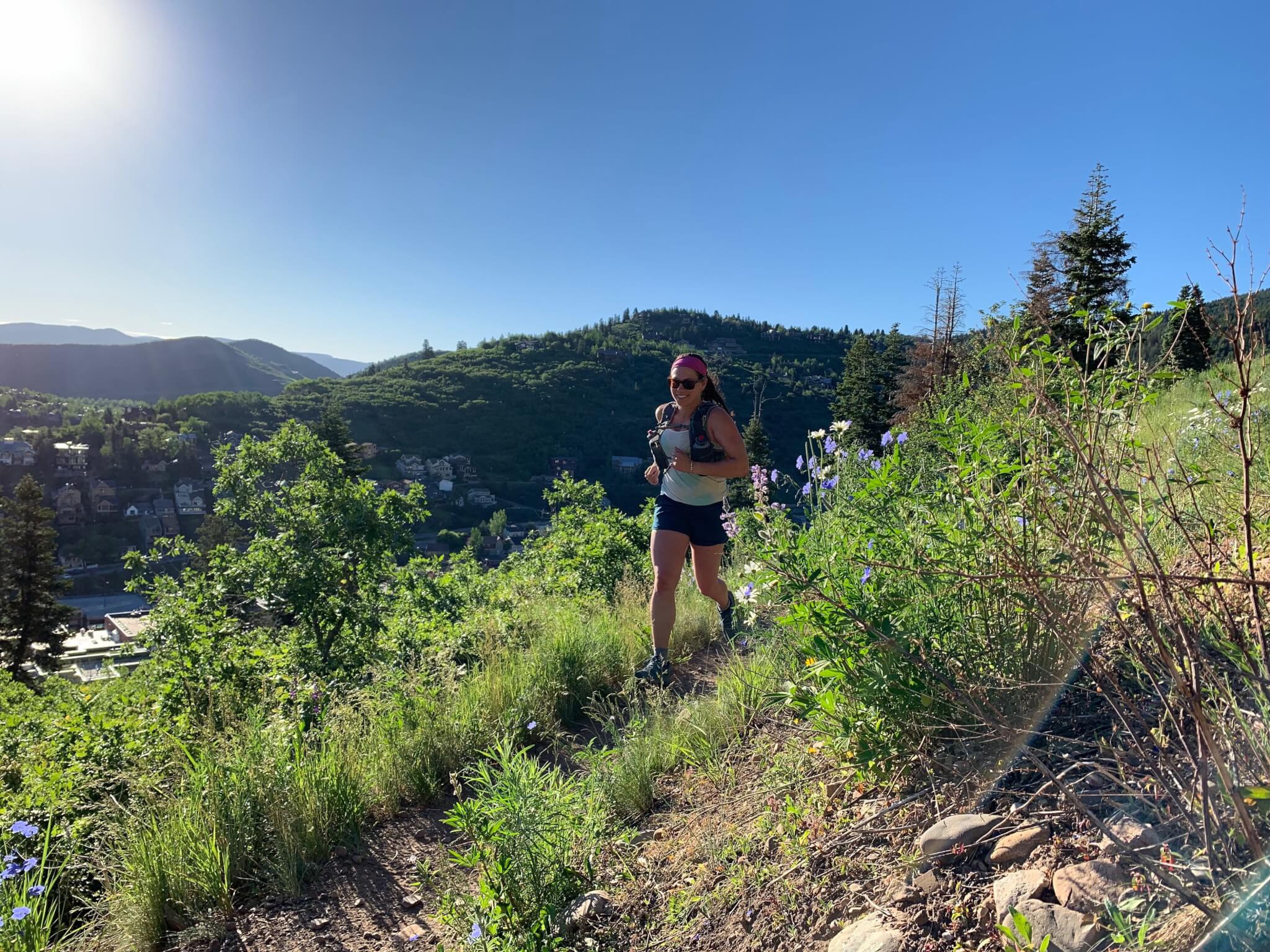
RECOVERY
After you get your muscles burning and your heart pumping with these training activities, make time for a cool down. One of the fastest ways to injury is not stretching or letting your muscles recover properly. Carve out a few minutes post-workout for these moves.
90/90 Lunge Stretch
Description: This move is an ideal way to increase your flexibility, lengthening the frontline of your hip, quad and core-leg attachments.
How to do it:
- Lunge forward with your right leg, kneeling into a 90-degree angle.
- Place your back knee into a 90-degree angle on the ground.
- Tuck your glutes under, creating a posterior tilt of your pelvis.
- This should create a stretch through the front log and hip of your kneeling leg.
Rep: Hold the stretch for 15-20 seconds.
Variations: Add in a side stretch by lifting the opposite arm from the front leg and reach laterally at your core.
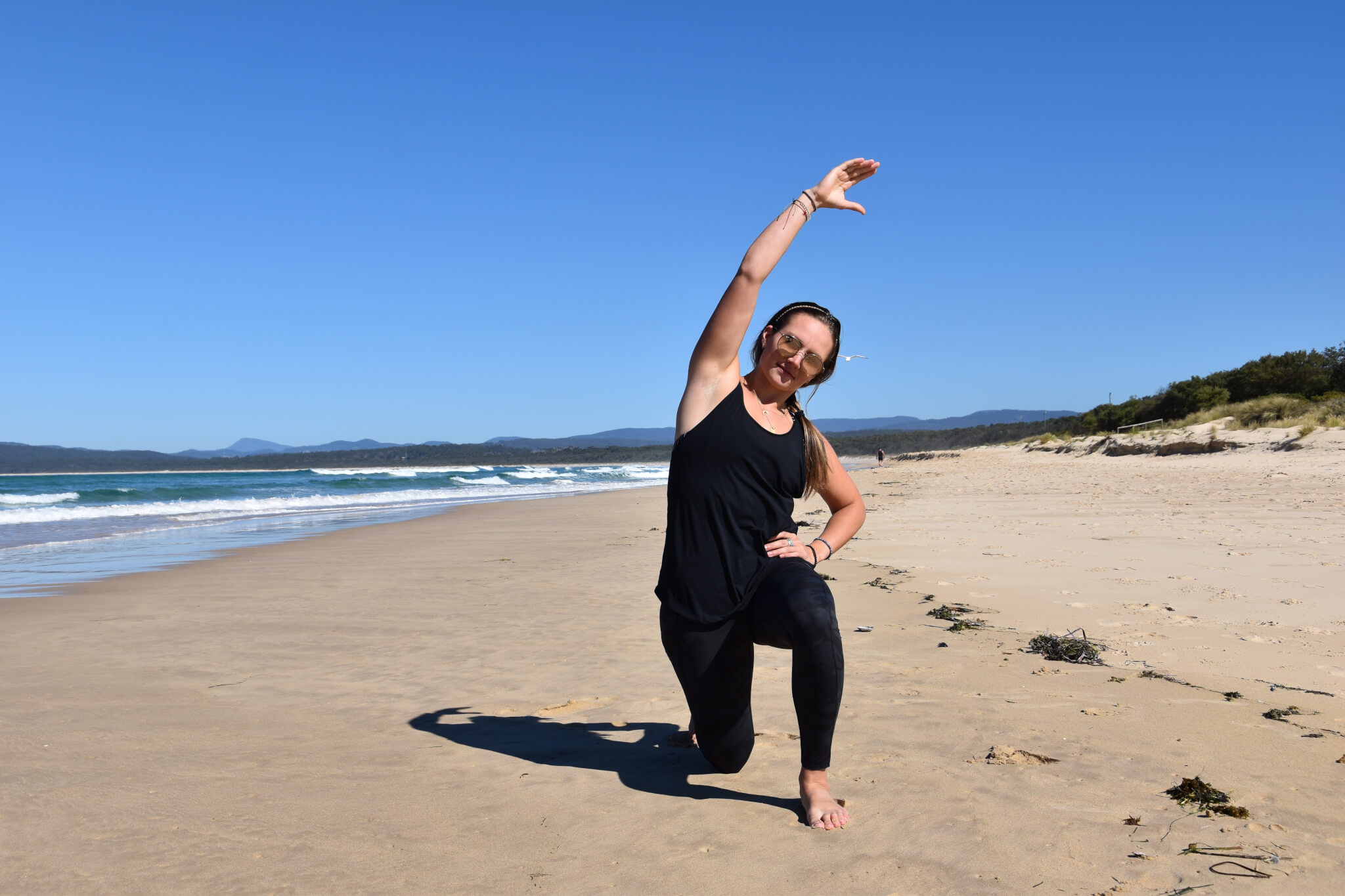
Cross-Legged Forward Fold
Description: This stretch lengthens the backside of your legs, the lateral leg and the IT band.
How to do it:
- Start in a standing position and cross your legs at the ankles with both feet flat.
- Fold forward bringing your hands to the ground or to a block, book, or stable object.
Rep: Hold the stretch for 15-20 seconds.
Variations: Walk your hands to the opposite side as your front crossed leg for a deeper stretch.
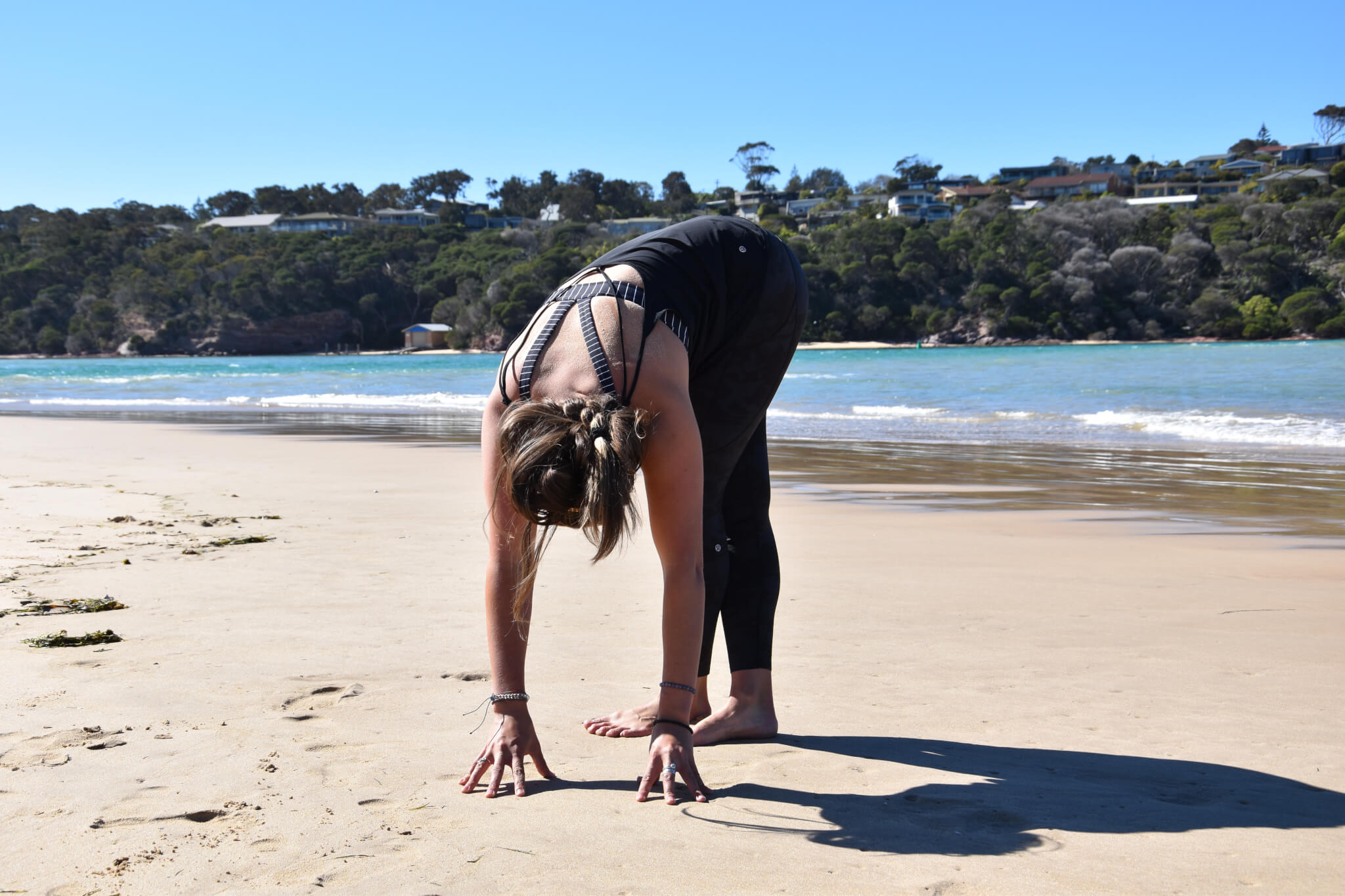
IT Band/Glute Roll
Description: Using a foam roller is a great way to get the benefits of a massage without the cost. Foam rolling relieves tight muscles and works connective tissue. This move will help with any tightness in your glutes and IT Band.
How to do it:
- Start in a seated position on the foam roller, knees bent and feet together.
- Lean your knees to the right so your left hip is lifted.
- Move your right hip in a circular motion 3-4 times, both clockwise and counterclockwise.
- Then roll forward and back along the side of your right glutes five to ten times.
- Finally, straighten your right leg, crossing the left over it, keeping the left foot flat on the ground.
- Roll the entire length of the upper part of your leg 5-10 times, making sure not to roll over your knee.
- Repeat the same moves on the left glute and leg.
Rep: Perform the move above one time
Pro tip: The foam roller can also be used for hamstrings, quads and calves.
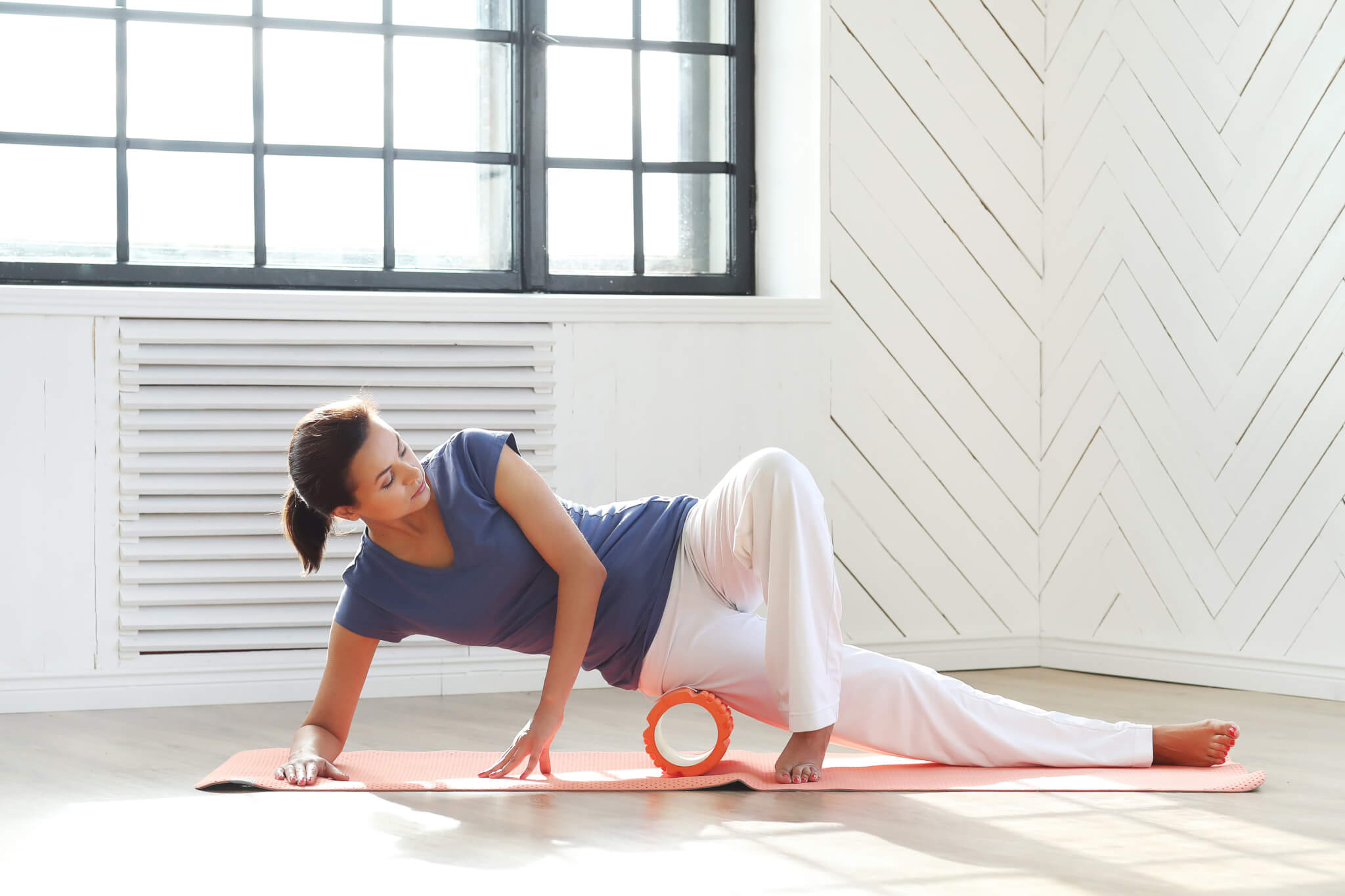
Training activities provided by:
Whitney Gardner – A sponsored athlete at Solitude Mountain and member of the U.S. Ski Cross Team, Whitney is also a yoga instructor and working on her strength and conditioning coaching certifications.
Jack Lovely – An ambassador for Big Sky Resort, Jack skis for Faction Skis, Giro Snow, and The North Face.
Chelsea Gallant – An expert snowboarder and social media ambassador for Solitude Mountain, Chelsea is also an active trail runner in the summer.
Simon Fournier – A professional alpine skier, Simon is an athlete ambassador for Tremblant. He incorporates mountain biking as part of his cross training.
Jasey-Jay Anderson – An Olympic snowboarder, Jasey-Jay proudly represents Tremblant as an athlete ambassador. He incorporates light repetitive moves and stretching in his training to avoid injury.
Miriam Schachtman – Former collegiate ski racer, Miriam has experience training young skiers and getting them prepped for the slopes.

